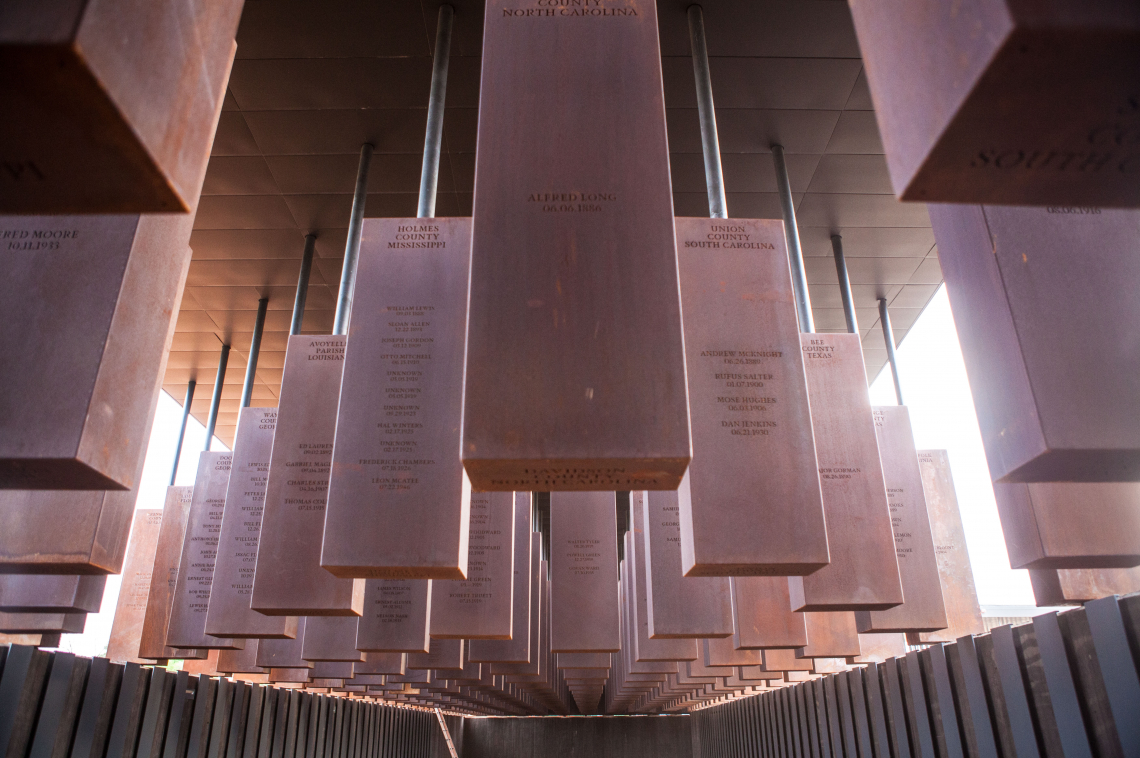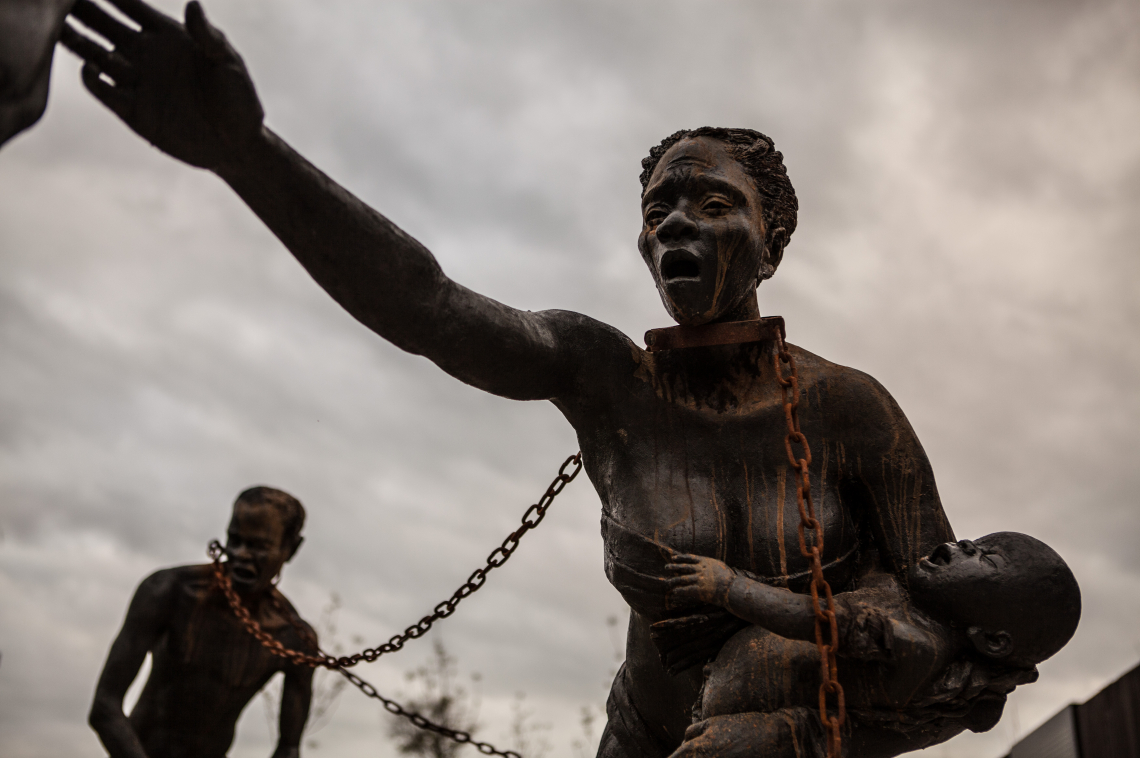

Article was originally published by Forecast
The design of the National Memorial for Peace and Justice is elegant, but it evokes unease. Its vast open rectangular roof is supported by row upon row of somber, weathered steel slabs from which slender poles rise. When you know that this new monument in Montgomery, Alabama, dedicated on April 26, 2018, is offered to the memory of some 4,400 African Americans murdered by mobs between 1877 and 1950, the somberness makes sense. But nothing prepares a visitor for the experience of traversing the four sides of the rectangle.
At first, all the slabs are at eye level and appear to support the structure. But the final two galleries take you down inclines, and it’s clear that the majority of the slabs are now suspended from the roof. As you travel lower, they rise above you: hundreds upon hundreds of them, each representing one of the 805 counties in 12 southern states, and eight states outside the South, where mobs carried out what the Equal Justice Initiative (EJI) terms “racial terror lynchings”—public murders, often involving torture and mutilation, intended to remind black Americans that the slightest deviation from the rules of Jim Crow could be fatal. The slabs, roughly human-size, are inscribed with the names of the dead; for Phillips County, Arkansas, the worst of all, there are 245 names.
The memorial was conceived by Bryan Stevenson, founder and executive director of EJI, a Montgomery-based legal nonprofit, and designed by him in collaboration with MASS Design Group of Boston. It’s the fruit of EJI’s research into the brutal history and mind-numbing extent of lynching between Reconstruction and the dawn of the civil rights era.
A Site for Contemplation and Learning
The memorial proper sits on a six-acre site owned by EJI, a few blocks from the center of Montgomery and a mile or so from the state capitol and its cluster of Confederate statues. Figural public art on-site helps tell the story not only of lynching but, as the EJI website puts it, “of enslaved black people…African Americans humiliated by racial segregation and Jim Crow, and people of color burdened with contemporary presumptions of guilt and police violence.”
As they enter the grounds, visitors are confronted by Ghanaian artist Kwame Akoto-Bamfo’s sculpture of black men and women in chains; elsewhere on the grounds, bronze figures by artist-journalist Dana King honor the women who supported the Montgomery Bus Boycott, and Hank Willis Thomas has created a somber wall from which rise the hands and heads of black men in gestures of surrender, evoking recent confrontations—many of them fatal—between black Americans and the police.
In a field next to the memorial are duplicates of all 805 slabs. They’re intended to be brought to the counties they represent and erected as memorials there. “Over time,” writes Fred A. Bernstein in Architectural Digest, “absences will reveal which communities have helped spread the Memorial’s moving message—and which have not.”
The Museum: from Slavery to Mass Incarceration
Along with the memorial, EJI has built the Legacy Museum, located in downtown Montgomery on the site of a former slave warehouse and close to a slave auction site, with artifacts and digital displays that link five themes: slavery, racial terrorism (including lynching), segregation, police violence against African Americans, and mass incarceration of black people. It’s an art gallery as well, with thematic works by Titus Kaphar, Sanford Biggers, Glenn Ligon, Jacob Lawrence, and Elizabeth Catlett.
Equal Justice Institute: A Passion for Justice
Bryan Stevenson, a Harvard-trained public-interest lawyer, founded the Equal Justice Initiative (EJI) in 1989. Under his leadership the organization has won reversals, relief, or release in the cases of 125 prisoners wrongly condemned to death row, while also working tirelessly against excessive and unfair sentencing and the abuse of prisoners and the mentally ill. Recently EJI has broadened its focus to include the history of incarceration and lynching in America.
Stevenson’s work on behalf of children sentenced as adults came into sharp focus in 2012, when his arguments before the Supreme Court resulted in a ruling that mandatory life-without-parole sentences for children 17 or younger are unconstitutional. His many honors include a MacArthur Foundation “genius” grant, the Lannan Foundation Prize for Human and Civil Rights, and the Lawyer for the People Award from the National Lawyers Guild.





